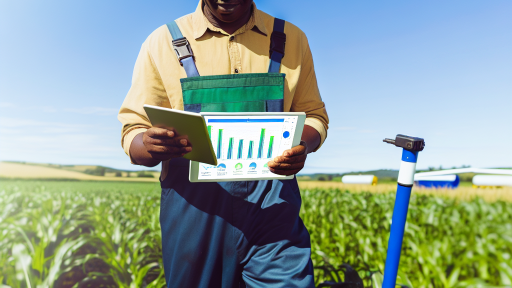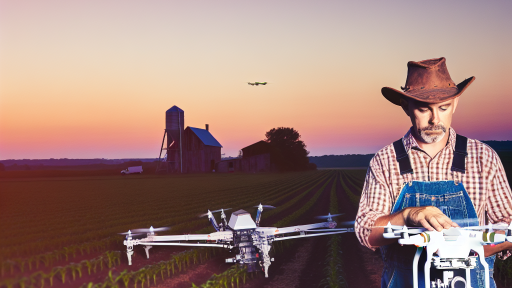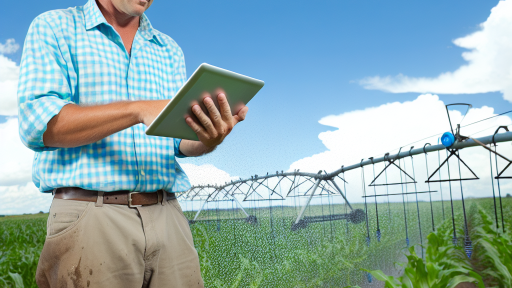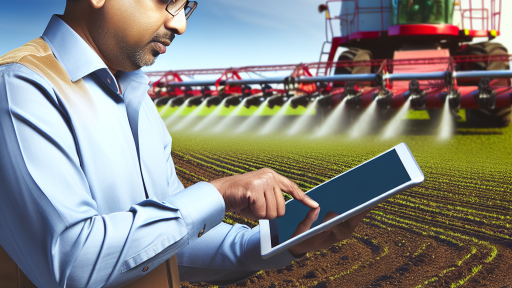Overview of Automated Harvesting Techniques
Defining Automated Harvesting
Automated harvesting involves using technology to collect crops.
This method increases efficiency and reduces labor costs.
Farmers adopt various tools and machines for this purpose.
Examples include robotic harvesters and automated platforms.
Importance of Automated Harvesting
Automated harvesting plays a crucial role in modern agriculture.
It enhances productivity while minimizing resource use.
Additionally, this technique helps meet global food demands.
Farmers benefit from reduced physical strain and worker shortages.
Technological Advancements in Harvesting
Innovations in AI and robotics drive automated harvesting forward.
These technologies improve the accuracy of crop collection.
Furthermore, they offer solutions for challenging terrains.
Overall, technology transforms traditional farming practices.
Challenges and Considerations
Despite its benefits, automated harvesting faces challenges.
Cost of initial investment can be significant for farmers.
Maintenance of sophisticated machinery also requires expertise.
Transform Your Agribusiness
Unlock your farm's potential with expert advice tailored to your needs. Get actionable steps that drive real results.
Get StartedWeather conditions can impact the effectiveness of automation.
Types of Automated Harvesting Equipment
Tractors
Tractors form the backbone of modern automated harvesting systems.
They efficiently perform multiple tasks across the farming spectrum.
Tractors equipped with advanced features enhance productivity significantly.
Some models can operate autonomously, reducing the need for manual labor.
Furthermore, GPS technology allows precise field navigation.
Farmers can monitor performance through real-time data analytics.
Robots
Robots are revolutionizing the harvesting process in various sectors.
These machines can navigate fields and identify ripe produce.
They use advanced vision systems for precision and accuracy.
Additionally, robots reduce harvest time and labor costs dramatically.
The integration of AI enables them to adapt to changing conditions.
Some robots specialize in specific crops, enhancing efficiency further.
Drones
Drones play a crucial role in modern automated harvesting techniques.
They aid in monitoring crop conditions from above.
Drones can identify issues like pest infestations or diseases early.
Farmers can use this information to make timely interventions.
Moreover, drones facilitate precision agriculture practices effectively.
Their aerial perspective helps in planning harvesting strategies efficiently.
Advantages of Automated Harvesting
Efficiency
Automated harvesting techniques significantly increase efficiency on farms.
They enable quicker crop collection compared to manual methods.
Moreover, they work tirelessly, operating for longer hours with minimal breaks.
This consistency contributes to a higher overall yield.
Labor Reduction
Automated harvesting reduces the need for manual labor in agriculture.
Showcase Your Farming Business
Publish your professional farming services profile on our blog for a one-time fee of $200 and reach a dedicated audience of farmers and agribusiness owners.
Publish Your ProfileThis shift allows farmers to allocate labor to other critical tasks.
Additionally, it helps mitigate challenges related to labor shortages.
As a result, farms can maintain productivity even during peak seasons.
Cost Savings
Cost savings are one of the most significant benefits of automated harvesting.
By minimizing labor costs, farmers can enhance their profit margins.
Furthermore, automation helps reduce the costs associated with crop damage.
Investing in automated technologies often results in long-term financial benefits.
Explore Further: Integrating IoT in Precision Farming Operations
Challenges in Implementing Automated Harvesting
Initial Investment
Automated harvesting requires a significant upfront investment.
Farmers need to consider the cost of advanced machinery.
Additionally, the technology is often complex and expensive.
Finance options can provide some relief for growers.
However, many might still struggle with budget constraints.
In the long run, these machines can save labor costs.
Therefore, evaluating the return on investment becomes essential.
Technical Skills
Using automated harvesting systems demands specific technical skills.
Operation and maintenance of this equipment can be challenging.
Training staff is crucial for successful implementation.
Many industries face a skills gap in agricultural technology.
Employers must invest in training programs for workers.
Hiring skilled technicians may also be necessary.
Ultimately, understanding the technology helps improve efficiency.
Find Out More: Cost Benefits of Adopting Precision Agriculture
Case Studies: Successful Implementation of Automated Harvesting in Different Crops
Automation in Fruit Harvesting
Fruit harvesting automation has shown significant efficiency gains.
For instance, AgriTech Innovations successfully implemented robotic fruit pickers.
This technology increased productivity while reducing labor costs.
Moreover, these robots minimize damage to fruits during the picking process.
As a result, the quality of the produce improved significantly.
Automated Vegetable Harvesting Solutions
Automated systems for vegetable harvesting also gained traction.
HarvestPro developed machines designed specifically for leafy greens.
This technology enhanced precision in harvesting operations.
Furthermore, the automation reduced harvest time drastically.
Consequently, farmers experienced improved profit margins.
Cereal Crop Automation
Automation in cereal crops transformed traditional farming techniques.
HarvestMax introduced advanced combines with built-in sensors.
These sensors optimize the timing of the harvest based on crop maturity.
Farmers reported enhanced yields and reduced waste due to better timing.
Therefore, the technology plays a crucial role in modern agriculture.
Challenges in Implementing Automation
Despite successes, challenges remain for automated harvesting.
Initial costs can be high, deterring some farmers from adoption.
Showcase Your Farming Business
Publish your professional farming services profile on our blog for a one-time fee of $200 and reach a dedicated audience of farmers and agribusiness owners.
Publish Your ProfileAdditionally, training is essential for effective machine operation.
Farmers may face technology compatibility issues with existing equipment.
However, these challenges are often outweighed by long-term benefits.
Future of Automated Harvesting
The future of automated harvesting looks promising.
Advancements in artificial intelligence continue to evolve this field.
Moreover, collaborations between tech companies and farmers are increasing.
These partnerships will lead to more tailored solutions.
Ultimately, they ensure automation meets specific crop needs effectively.
See Related Content: Enhance Precision Farming with Sensor Data
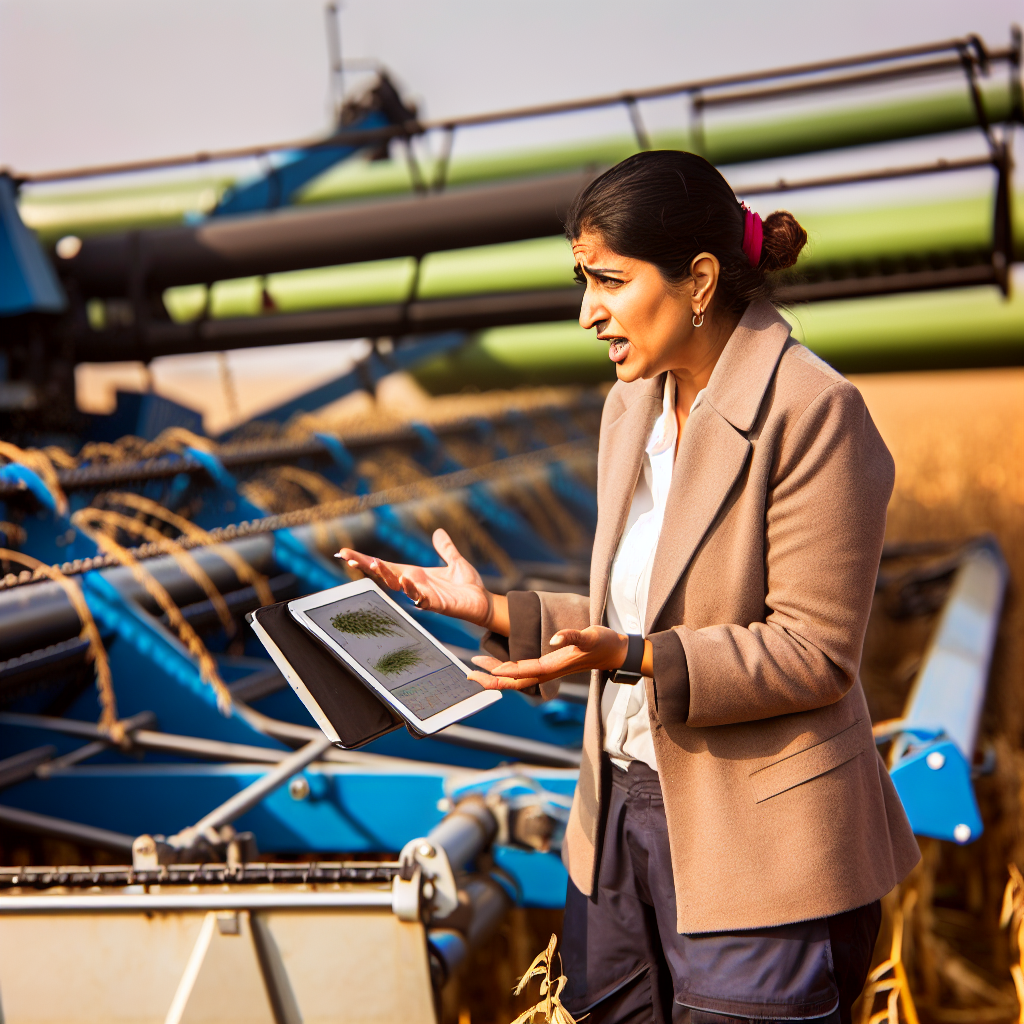
Future Trends in Automated Harvesting
Innovations in Technology
New technologies are transforming automated harvesting processes.
Robotics is becoming increasingly sophisticated in agriculture.
For instance, drones are enhancing crop monitoring efficiency.
They provide real-time data on crop health and yields.
Moreover, autonomous machines are improving harvesting precision.
This innovation reduces crop damage significantly.
Additionally, artificial intelligence is optimizing harvest planning.
AI analyzes factors like weather, soil conditions, and growth rates.
Integration of IoT Devices
The Internet of Things (IoT) is revolutionizing farming practices.
Farmers can now track equipment performance remotely.
This integration leads to more efficient use of resources.
IoT devices collect data, offering insights into crop conditions.
Such data helps in making informed decisions quickly.
Consequently, this technology boosts overall productivity.
Sustainability and Environmental Impact
Sustainable practices are at the forefront of automated harvesting.
Innovations aim to minimize waste and energy consumption.
For example, electric harvesters are gaining popularity.
They reduce reliance on fossil fuels significantly.
Additionally, advanced sensors help in precise resource management.
This leads to less environmental degradation over time.
Adoption Challenges
Despite advancements, challenges remain in adoption.
High initial costs deter some farmers from transitioning.
Also, training is necessary for effective technology use.
Furthermore, farmers fear potential job losses due to automation.
Addressing these concerns is crucial for widespread adoption.
Future Outlook
The future of automated harvesting seems promising.
Continued innovations will enhance efficiency and productivity.
Ultimately, the aim is to ensure food security globally.
Moreover, increased collaboration between tech companies and farmers will drive growth.
As a result, automated harvesting will become a standard in agriculture.
Learn More: How Blockchain Is Making Farm-to-Market More Transparent
Showcase Your Farming Business
Publish your professional farming services profile on our blog for a one-time fee of $200 and reach a dedicated audience of farmers and agribusiness owners.
Publish Your ProfileComparison of Traditional vs. Automated Harvesting Practices
Overview of Traditional Harvesting
Traditional harvesting involves manual labor in the fields.
Farmworkers use hand tools to gather crops effectively.
This method relies heavily on human skill and experience.
It fosters a close relationship between workers and the land.
Consequently, traditional harvesting can be labor-intensive.
Challenges of Traditional Methods
Labor shortages pose a significant challenge to traditional harvesting.
Additionally, physical demands can lead to worker fatigue.
Weather conditions can affect the efficiency of manual harvesting.
Moreover, harvest timing becomes crucial for crop quality.
Often, traditional methods may result in uneven harvests.
Introduction to Automated Harvesting
Automated harvesting uses advanced machinery to gather crops.
Robots and automated systems improve efficiency and speed.
This technology can operate in various weather conditions.
Overall, it reduces the dependence on manual labor significantly.
Advantages of Automated Harvesting
Increased efficiency is a primary benefit of automation.
Machines can harvest large areas swiftly and accurately.
Furthermore, automation minimizes the risk of physical strain.
This method allows for consistent and uniform crop quality.
In the long term, automated systems can reduce operational costs.
Comparison of Productivity
Productivity levels differ between traditional and automated methods.
Manual harvesting may yield lower output in peak seasons.
Automated harvesting increases output during high-demand periods.
Moreover, automation can operate continuously with minimal downtime.
Thus, the transition to automation supports larger scale farming.
Factors Influencing Harvesting Method Choice
Choosing between traditional and automated methods depends on several factors.
Farm size, crop type, and available resources influence this decision.
Ultimately, understanding the strengths and weaknesses of each method is crucial.
Farmers must evaluate their specific needs before making a choice.
Both methods have unique benefits and challenges.
Sustainability and Environmental Impact of Automated Harvesting Techniques
Benefits of Automated Harvesting
Automated harvesting techniques enhance efficiency in crop gathering.
They significantly reduce labor costs and time spent on harvesting.
Furthermore, they minimize crop damage during the harvesting process.
As a result, farmers experience higher yields and better quality produce.
Reduction of Carbon Footprint
Automated systems use advanced technology to optimize fuel use.
This strategy leads to a notable reduction in greenhouse gas emissions.
Moreover, fewer trips across fields decrease soil compaction.
Consequently, this practice helps maintain soil health and productivity.
Impact on Biodiversity
Automated harvesting can support diverse agricultural practices.
Systems designed for selective harvesting protect non-target plants.
This approach aids in maintaining local ecosystems and habitats.
Showcase Your Farming Business
Publish your professional farming services profile on our blog for a one-time fee of $200 and reach a dedicated audience of farmers and agribusiness owners.
Publish Your ProfileAdditionally, it fosters biodiversity by promoting varied crop rotations.
Efficient Resource Use
Automated technology allows farmers to use water and fertilizers more effectively.
This efficiency leads to less waste and reduced environmental impact.
Moreover, precision techniques help identify specific crop needs.
As a result, farmers apply resources only where necessary.
Challenges of Automated Harvesting
Despite numerous benefits, automated harvesting poses challenges.
Initial equipment costs can be prohibitively high for some farmers.
Maintenance and technical knowledge are also critical for success.
Consequently, some small-scale farmers might struggle to adapt.
Future of Automated Harvesting
The future of automated harvesting looks promising with innovation.
Emerging technologies may further increase efficiency and sustainability.
Additionally, ongoing research will likely address current challenges.
Ultimately, these advancements may revolutionize agricultural practices globally.
Additional Resources
Insights into the harvesting tools and equipment’s for horticultural …
AI in Agriculture and Farming: Revolutionizing Crop Growth – Intellias

